Oregon Holly Grape, Snapdragon, Caesar’s Weed, Golden Alexanders, Loroco, Safflower, White Sagebrush, Puget Balsam Root, Yellow Commelina, Bitter Gourd
Oregon Holly Grape is neither a grape or a holly. So much for common names being helpful. It’s the North American equivalent to the Barberry. Beyond cultivation its distribution is a bit strange. One the west coast it runs form California to British Columbia including Idaho, Wyoming, and Alberta. On the east side of the continent it goes from Kentucky due north including Canada but not the east coast. Then for some reason it is also in Georgia and New Jersey. The leaves do look like a holly and its name, for a change, suggests that, Mahonia aquifolium. It usually has clusters of yellow flowers around April, depending exactly where you are in North America. The acidic berries are used to make pies,jam, jelly, confections and beverages including wine. The flowers are eaten as is or used to make a lemonade-like drink. Four relatives are used in similar ways but none of the others have flowers that are reported as edible. One however, the Mahonia nervosa, has young leaves that can be simmered in water then eaten.
While most articles on edible flowers include Snapdragons I considered leaving them out. Let me put it this way: If the flavor of the Snapdragons existed in some other plant it would not be eaten. They are edible, they won’t kill you, but when it comes to flavor they are on the poor to bad side. Their taste can run from bland to bitter, depending upon the soil and how they were raised. They get included on edible flower lists — particularly the commercial edible flower list — because they are pretty, a lot of folks recognize or grow them, and few people eat garnishes anyway. If you ever draft a list of edible flowers and you aren’t alphabetizing, put Snapdragons last, better still, as a Post Script, a little asterisk at the bottom. The genus they are in is called Antirrhinum. It’s Greek and means “opposite the nose” or “unlike the nose.” I don’t know why that family is called that but I am sure it is not a compliment. They are called “snapdragons” because of the blosom’s resemblance to a fictional face of a dragon that opens and closes when squeezed.
There are many invasive species plants locally, some of them intentionally introduced by the United States Department of Agriculture. One of them is Caesar’s Weed, aka Caesarweed and Caesar Weed, botanically Urena lobata. It was brought to the state as an industry to make fiber and indeed in Africa they still make burlap out of Caesarweed. They ret it like flax, which is to soak it in (preferably) running water which causes the fibers to separate. Young leaves are edible cooked but they are a famine food as they never loose their sandpaper texture. There is a separate article about them here. Caesarweed is in the mallow family and produces a small, pink mallow blossom which can be eaten raw. Toss it into salads.
While the name is pretty and flower is as well most folks don’t know about Golden Alexanders, or Zizia aurea. In the carrot family it is a prime edible found in the eastern two thirds of North America plus one county in southeastern Wyoming. It’s native and prefers moist woodlands but is also well-known for surviving droughts. Golden Alexanders blooms from May to June, which varies a bit from Florida to Canada. The yellow flowers are bunched at the top of the plant. Each flower is tiny, some three millimeters long with five sepals, five petals, and five stamens. In the fall the leaves turn purple. The flower clusters with the main stem removed are added to salads, or they make a delicious cooked vegetable reminiscent of broccoli. In Eurasia a related species, Smyrnium olusatrum, Black Lovage, were cultivated as a vegetable, gradually replaced by celery.
If you like Latin American cuisine one of the well-known edible flowers, buds and blossoms, is the Fernaldia pandurata, or Loroco. It is part of the traditional dish pupusas. It grows wild in northern Central America and southern Mexico but is also under cultivation and will grow in south Florida. The buds and unopened flowers are cooked with cheese, eggs, rice or chicken. They are also used in crepes, tortillas and tamales. The flowers and buds can also be cooked as greens or folded into egg batter. Originally called Quilite, which means “edible herb” the pungent flowers similar to artichokes in flavor are high in calcium, niacin and fiber, but low in calories. Oddly this vine is closely related to toxic members of the dogbane family but tests on the flowers for cardiac glycosides have been negative. The root, however, is used as a poison.
Because saffron is so expensive, $100 to $150 an ounce, several flowers have been used as substitutes and adulterants, among them Safflower. But, safflower has uses in its own right. Botanically Carthamus tinctorius, safflower blossoms are the source of a yellow or red dye used in butter, confections and liqueurs… and you thought that Sambuca was naturally colored… The seeds are fried and eaten in chutney. The oil is used in salads and cooking. Young leaves can be eaten as a potherb or seasoned in soy sauce. The flower’s petals are edible, slightly bitter, often cooked with rice.
The White Sagebrush is found throughout most of North America except Florida, Georgia, West Virgina, Alaska, the Yukon Territory, and extreme eastern Canada. Called Artemisia ludoviciana, it has also become a favored garden plant though most people have no idea of its uses. Thirteen species in the Artemisia genus were used by the Native American groups for a variety of medicinal, veterinary, and ceremonial purposes. The Apache, Chirichua and Mescalero used the plant to flavor meat. The Blackfoot chewed the leaves like candy. The flowerheads can be used as seasoning or to make a tea. It has many cultivars.
The Puget Balsam Root aka Deltoid Balsam Root is strictly a west coast of North America plant. In the sunflower family Balsamorhiza deltoidea was a food and medicinal plant for Native Americans. Young tender roots are eaten cooked, like carrots, or candied. The natives also roasted and ground the root using it like coffee. The young leaves were boiled as a potherb and the plant’s oily seeds eaten like sunflower seeds. The flower stalk can be cooked and eaten like a vegetable.
I know I mentioned Dayflowers earlier but I thought a recent discovery deserved its own entry, the Yellow Commelina, or Commelina africana. I was teaching a class in tamp when a student said “what is this?” A low-growing salmon to yellow blossom was looking up at me. I recognized what I thought to be the genus immediately, Commelina but I have never seen or heard of a yellow one. A bit of research identified it. The question is how did it get to Florida? It is listed as one of Africa’s resources and edible cooked including the root. Can be confused with Aneilema aequinoctinale.
The Bitter Gourd, Momordica charantia, will never win a popularity contest with most people. Though it is a plant that serves us well with many parts edible and medicinal uses it also is bitter and smells like an old, wet, rubber gym shoe. Not exactly a match made in botanical heaven. The leaves can be cooked as a green, and the water used as a tea that controls blood glucose. The bitter fruit is edible cooked and red arils around the seed –the arils not the seed — are edible and nearly all lycopene. And the fragrant blossoms can be used for flavoring. You can read about the bitter gourd here.
See Edible Flowers: Part Seventeen

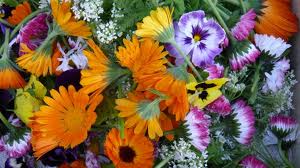
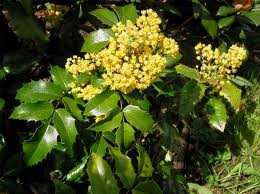
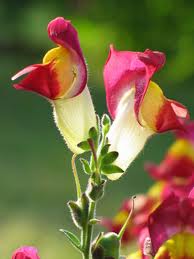
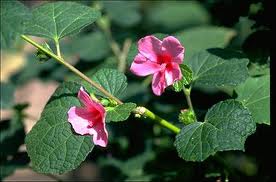
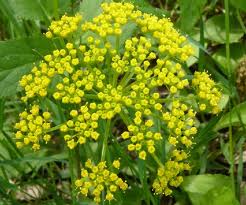
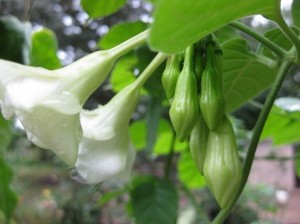
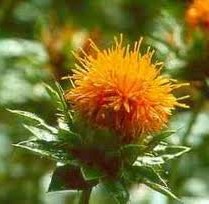
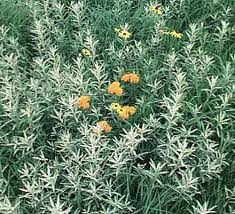
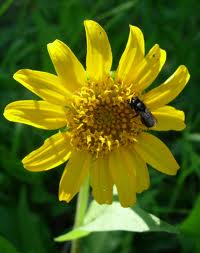
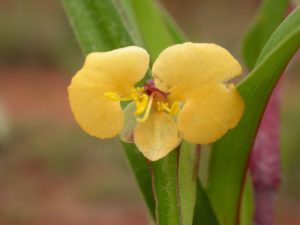
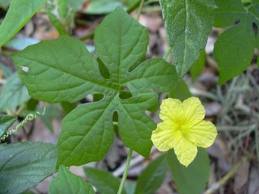

Hi – how did you learn about the edibility of zizia aurea flowers?
Thanks
It is listed on page 22 of Cornucopia II.